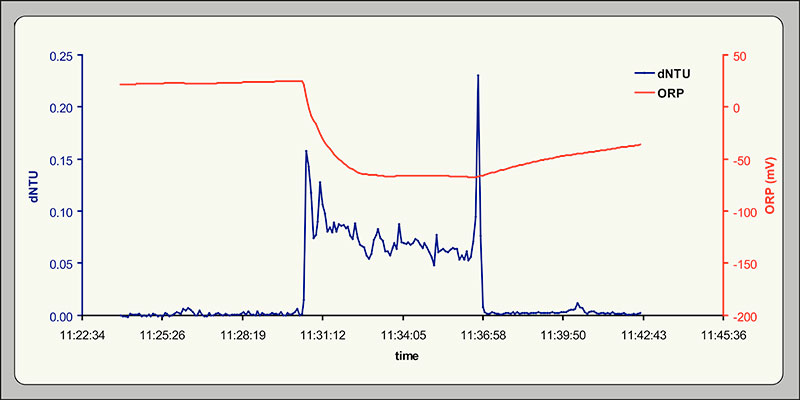CTD Data
Plot showing light scattering (dNTU) sensor and Oxygen Reduction Potential (ORP) data, versus time, acquired by the CTD rosette as it passed through a plume overtop of Kawio Barat volcano. There was an intense particle anomaly and ORP decrease in the bottom 30 meters of the water column when the plume was encountered. A drop in the ORP, like you see here, means that there are more electron donor compounds in the water produced by enrichment of seawater in dissolved metals and chemicals billowing out of hydrothermal vents. The ORP values begin to increase again, recovering slowly, when the CTD leaves the plume.

